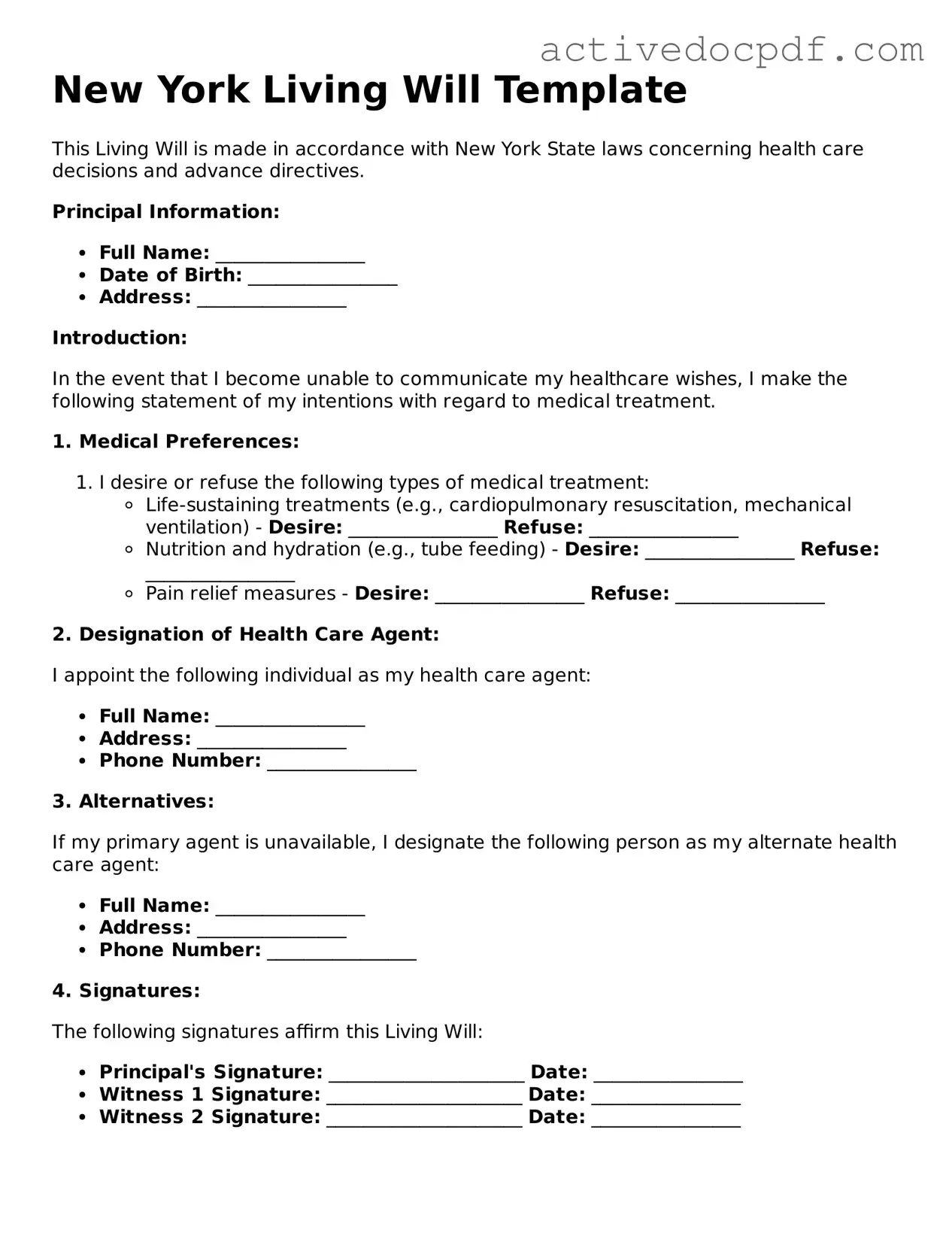Legal Living Will Document for New York State
A New York Living Will form is a legal document that outlines a person's wishes regarding medical treatment in case they become unable to communicate. This form helps ensure that healthcare providers and loved ones understand the individual's preferences about life-sustaining measures. Having a Living Will can provide peace of mind for both the individual and their family during difficult times.
Edit Form Online
